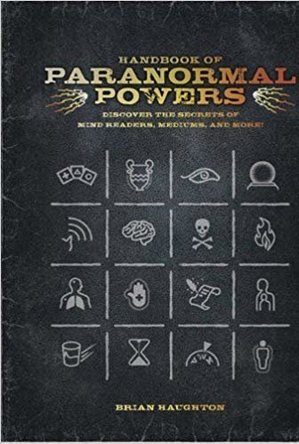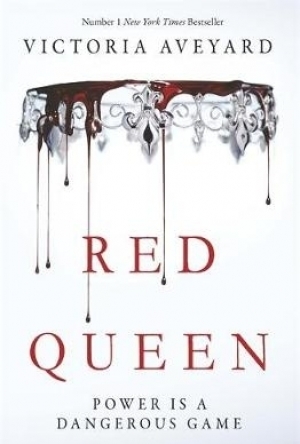
Meditation Sounds and Ambient Music to Meditate
Health & Fitness and Lifestyle
App
We believe that the term "meditation" is a result of differing sets of practices that are found...

Breethe - Guided Meditation
Health & Fitness and Medical
App
De-stress & sleep better in only 10 min with your personal mindfulness coach! Breethe is the...
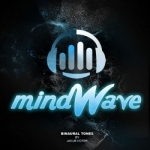
Mind Wave - Binaural white noise
Health & Fitness and Entertainment
App
Mindwave's potent binaural tones have been imitated since it's first week in the app store, but the...

Overcome Phobias by Glenn Harrold: Clinical Hypnotherapy for All Phobias
Health & Fitness
App
Glenn Harrold has drawn upon his 20-year experience as a clinical hypnotherapist to produce the two...
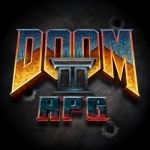
DOOM II RPG
Games and Entertainment
App
Hell has returned! Prepare yourself for DOOM II RPG for the iPhone, the sequel to id Software’s...
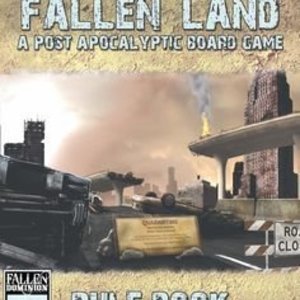
Fallen Land: A Post Apocalyptic Board Game
Tabletop Game
Set in a post-apocalyptic sci-fi setting, Fallen Land: A Post Apocalyptic Board Game is a hybrid...
Haley Mathiot (9 KP) rated Dead Perfect in Books
Apr 27, 2018
Ronan is five hundred and thirteen years old. He has never loved anyone in his life, but when Shannah comes to his door he takes her into his house and begins to heal her in his own special way. But then he accidentally falls in love with her. That causes problems—when your mortal soulmate is going to die soon and she isn’t sure she wants to be a leach her whole life. If he changes her against her will, will she hate him forever? Are his only choices letting her die and losing her, or changing her and losing her?
And then there’s that whole problem with a vampire hunter tracking down Ronan… and trying to kill him.
My Thoughts—at first glimpse, this seemed so twilight-ish. But once I started reading it I got out of my vampire stereotype and enjoyed this book quite a lot. I was at the library and dying for a light-hearted vampire romance (because I was just in that mood) so I picked it up. It’s a very quick read, and very sweet.
The Plot—the plot moved quickly, though at one point a thought crossed my mind, “there isn’t much story here, how is the author dragging it out into 345 pages and is still managing to keep it interesting?” although the plot seemed a little simple, it held my attention very well.
The Characters—I loved the characters in this book. Shannah was depicted as a desperate-to-do-anything-to-keep-alive kind of girl, to the point that she was willing to live with a vampire. Ronan had so much passion and love for this poor girl that it made him endearing. I love how he’d always call her “love.” It was so sweet. Jim Hewitt, the hunter, was a character that you just didn’t like one bit—a strong willed jerk who, although he thought he was doing the right thing, even that he was doing it to keep Shannah safe, I didn’t like him and I felt sorry for him. Though, in my opinion, I liked what happened to him at the end ;)
The writing—There were a lot of really good descriptions in this book, I was able to see everything that the author said in beautiful detail. There wasn’t any graphic sex, though there were a few scenes at the end, but it was brief. There were a few re-used phrases in the book though, and that gets annoying. (My sister and I call this the JMG Syndrome, or “Jenny McGrady” syndrome, because of a series we read when we were younger. Jenny was always feeling “like she got slugged in the stomach”. The phrase was used several times in all fifteen books. It got old really fast.) Shannah had many kissed “brushed across her brow” in this book. But besides that, the writing was warm and welcoming.
My Recommendation: I recommend this book to anyone who likes a good paranormal romance, vampires, or just a romance in general. Ages 16+, only because of the frequency of sex at the end of the book (though I will say that the vampire held fast to abstinence, so that was encouraging.) there wasn’t any foul language, and I really liked that! I hate books that have so much language that I feel dirty reading it. But this book was very clean.
~Haleyknitz
Hadley (567 KP) rated Handbook of Paranormal Powers in Books
Jun 2, 2019
But this book seems to have been written by a skeptic that disguised it as a book from a believer in the paranormal, which to say is a pretty clever way to sell a book when the belief in the paranormal is at an all time high. The author spends much of the book detailing people who have exhibited paranormal abilities just to quickly tear them down. I will say that Brian Haughton did a wonderful job on researching for this book, bringing up not only the history of paranormal abilities, but also self proclaimed psychics that readers may not have even heard of, such as Florence Cook, who had her abilities tested by none other than William Crookes( the discoverer of the element thallium).
Haughton's 'Handbook of Paranormal Powers' should have been titled something else, mostly because it's a history lesson in ESP and also, obviously, from the point-of-view of a skeptic. Yet, it doesn't lack for reading by believers; one such part I found interesting was a part on dowsing- the supernatural ability to find hidden objects, substances, geographic features, or sometimes even people- which you may have seen someone doing by holding two rods to find underground water. This part was about when dowsing became popular in the seventeenth-century France, and was being considered 'evil': ". . .with the dowser Baroness de Beausoleil and her husband, a mining expert, journeying across Europe and allegedly locating ore deposits of iron, gold, and silver. The couple established a thriving mineral company, but when their methods of locating metal ores became known they were accused of practicing the 'black arts' and imprisoned for the rest of their lives. " Readers learn that it wasn't until the nineteenth century, with the rise of spiritualism, that dowsing was no longer considered 'evil.'
Another one that interested me concerned the comedian Andy Kaufman, and his pursuit to rid himself of a rare lung cancer with psychic healing: "In March 1984, US comedian Andy Kaufman traveled to the Philippines for a six- week course of psychic surgery after being diagnosed with a rare lung cancer. The surgeon, Jun Labo, performed the operation, and claimed that he had removed large cancerous tumors from Kaufman's body. On May 16, 1984, Kaufman died from renal failure as a consequence of a metastatic lung cancer. "
I hate, but also love this book, not because Haughton backs up all of the skeptic claims with scientific research and tests, but because he claimed this to be a handbook or paranormal powers. If you glance at the cover, just below the title is: 'discover the secrets of mind readers, mediums, and more' - this can be taken that it's written by someone who believes in the paranormal, as well as someone who may have had personal experiences with the unknown, but with that said, I did learn a lot about the history of paranormal powers as well as people I had never heard of.
To prove the skepticism in Haughton's writing, we can turn to page 173, where he writes about how to test whether or not a self-proclaimed psychic surgeon is real. But even before this page and throughout this book, Haughton explains someone doing an extraordinary thing only to quickly explain away why it was fake to begin with. The 'Handbook of Paranormal Powers' reads a lot like a college thesis, that I found myself getting bored with the matter-of-fact tone. Some readers may enjoy reading essay-type books, but for me, it becomes repetitive enough that I don't remember much of the information I had just read.
Also, readers may come away with the feeling that Haughton doesn't care about the slight chance that some paranormal powers may be real, but instead he'd rather read about the scientific facts. I would only recommend this book to people who want to do a light reading on paranormal history, meaning mostly what made headlines in the news. For believers, I would suggest you go elsewhere.
Mare is thrust into a world she never wished for and doesn't fit into. She is given no choice but to accept. There is much to learn about her abilities and how to control them. The one demand she made was to ensure the safety and well-being of her family. Her brothers are called home from the war, but not soon enough to save all of them. <spoiler> One was a member of a rebel/revolutionary group and was executed for it. </spoiler> This pushes Mare over the edge and she joins the rebel group, the Scarlet Guard.
It's intriguing to learn what each person has the ability to do. The control over water, manipulation of light, healing, mind-reading and more. But it's very off-putting and juvenile when the author refers to them as greenies or telkies. It sounds more like a two-year-old naming their stuffed bear Brownie or Fluffy than an author giving life to special abilities.
The world is not our own, so it would be nice to learn more about it. Unfortunately, Mare is not very learned and we must view the world through her lens. It would be fascinating to be given a history, geography and culture lesson from Julian in novella form. What does their domain look like? What about the surrounding kingdoms, their rulers, ruling abilities and geography? How did these new borders come to be? (It is mentioned that the borders were not always the way they are currently.) Overall, the world building is pretty good but could be improved (which it does later in the book.) The physical descriptions of the towns the royals pass on their way to the palace late in the story are good and allow the reader to immese themselves in the world more fully.
The princes are, unsurprisingly good people despite the harshness of the King and Queen. <spoiler> Or at least appear to be that way in the beginning, but it does not last. </spoiler> The future love interest(s) must be liked by the reader. Mare herself is harsh and quick-tempered by likable nonetheless. Though she has no choice in her future, she assures her family's well-being and that shows she has a good heart.
Of course, our protagonist catches the attention of not just one but two princes. The older and future King, Cal, wants to be a good ruler so he secretly ventures out in public to learn and experience his people outside the reports of advisors. He even decides to send a group of Silver soldiers to the front line and chooses to lead them. It may win the war, but it could also kill him. The younger, forever shadowed brother Maven believes that Reds and Silvers are equals. He even joins the Scarlet Guard to help propel change and spark a revolution.
Anyone can betray anyone.
The Scarlet Guard secrets Maven and Mare out of a play and transports them to another town just to have a conversation. Clearly the travel and discussion would take a significant amount of time and yet no one wonders where they are. The return trip and the play ending are just completely skipped. It was abrupt and didn't seem well-thought out.
The book ends with betrayal and bloodshed. But it also ends with a promise and the hope that not all is lost. It makes me want to begin the next book immeiate. Highly recommended book to fans of YA novels with good world building and character development that deal with monarchical rule and upheavals as well as people with special abilities.
Cynthia Armistead (17 KP) rated Mindhealer (The Watchers, #5) in Books
Mar 1, 2018
<p>
<a target="_blank" href="http://www.goodreads.com/book/show/268186.Dark_Watcher">Dark Watcher</a> opens in Santiago City (aka Saint City), with a quartet of witches. Mindhealer is the only book that takes place outside of Santiago City, which seems to be the primary setting for all of Saintcrow's novels (from what I've read in the descriptions). </p>
<p>
Theodora, earth witch and healer, runs the Cauldron, an occult book and supply store. Mariamne Niege (water witch, prognosticator) and Elise Nicholson (fire witch) work for her in addition to being, respectively, a graduate student and a musician. Suzanne (air witch, I don't believe we ever learn her last name) is Elise's foster mother and their teacher, something of a high priestess to the little group.</p>
<p>The four women know that they're psychic and that "magick" is real. They don't know that they are "Lightbringers," that there are groups and creatures in the world that hunt them, or that a group called Circle Lightfall trains and sends out "Watchers" to protect (and recruit) Lightbringers in order to counterbalance the darkness in the world.
</p>
<p>Watchers are formerly wicked men with some psychic talents who have been given a chance to redeem themselves. They are bonded with a tanak, a dark symbiote that gives them supernatural speed, strength, healing power, and longevity. The tanak also makes it possible for them to sense darkness, but it causes the Watchers to experience pain whenever they're around Lightbringers.
</p>
<p>The catch is that for every Watcher, there is one Witch whose presence and touch will be intensely pleasurable instead of torturous. The hope of finding that one witch is what keeps each Watcher going, fighting and surviving horrific wounds for one chance at happiness.
</p>
<p>The use of the tired soulmate meme (though that specific word is never used) is annoying, and it detracts from what is otherwise a fairly original concept. The fact that there are only male Watchers, though there are a few (mostly queer) male lightbringers, is a bigger disappointment. The reasoning given is that women do not have the viciousness to kill without hesitation. That's simplistic, at best. Male lightbringers are also painted as weaker than females, and that, in combination with the pedestal upon which Watchers place Lightbringers, unbalances the novels.
</p>
<p>Theodora is the main subject of the first book. Mariamne is the focus of <a target="_blank" href="http://www.goodreads.com/book/show/268188.Storm_Watcher">Storm Watcher</a>. <a target="_blank" href="http://www.goodreads.com/book/show/268189.Fire_Watcher">Fire Watcher</a>, of course, is primarily about Elise. We meet a new air witch, Anya Harris, in <a target="_blank" href="http://www.goodreads.com/book/show/268190.Cloud_Watcher">Cloud Watcher</a>. And finally, Mindhealer is about Caro Robbins, whose brother plays a small part in Fire Watcher.
</p>
<p>The books should certainly be classified as romances first, although they do have very strong paranormal themes. Every book follows the classic romance novel formula. The fact that I kept reading despite my dislike of romances is a testament to Saintcrow's talent.
</p>
<p>I suspect that the author either is pagan, or is very familiar with pagan practices. The rituals in each novel are nicely done, and I wouldn't be surprised to hear people using some of the invocations used in Circle.</p>
<p>I do have to propose the Watcher drinking game. Take a shot every time there's any mention of treating a Watcher "dreadfully," and every time a Watcher moans about how unworthy he is to be in the presence of a Lightbringer. You'll be past noticing any formulae in no time!</p>

